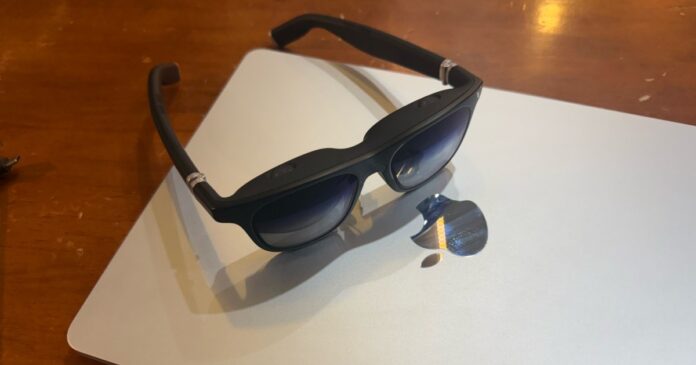Introduction to Apple’s Missed Opportunities
A lot has been said and written about how Apple missed the mark with its AI efforts. It’s pretty obvious that the current status of Apple Intelligence and Siri assistant is functionally way beyond what you can accomplish with Microsoft’s Copilot and Google’s Gemini suite. Interestingly, Apple also lost the market edge in the wearable XR segment. The company’s first foray was the Vision Pro, an uber-expensive technical marvel that failed to create the same kind of buzz as the company may have expected.
The High Cost of Vision Pro
A price tag worth $3,500 is certainly a deterrent, but the lack of immersive productivity scenarios and a vibrant app ecosystem are also to blame. VisionOS is definitely promising, but once again, accessing it requires spending a fortune. The gulf of spatial computing for Mac users has surprisingly been filled by much smaller labels. The likes of Xreal, RayNeo, and Viture have not only offered fantastic AR/VR glasses, but have also created fairly rewarding productivity software.
Comfort, not Cumbersome
My first brush using macOS in an immersive space came courtesy of the Xreal Air 2. Armed with a pair of 0.55-inch Micro-OLED display units that push a 1080p resolution per eye and support a 120Hz refresh rate, these glasses offered a supremely easy plug-and-play approach to spatial computing, though not without some faults. My current setup includes the Viture One smart glasses, which also come with a tint-changing electrochromic film atop the glass lens for maximum immersion. You can choose to see your surroundings or dim them out based on external lighting conditions.
The Problem with Vision Pro
The Vision Pro is heavy, uncomfortable, and looks tacky. You definitely don’t want to wear it in public spaces. Digital Trends’ gaming lead, Giovanni Colantonio, also mentioned how the Vision Pro felt like it was squeezing his face. A pair of smart glasses solves that problem, and quite handsomely. The Viture One, for example, looks pretty close to a pair of Wayfarers and doesn’t put any unbearable load on your skull. They weigh 78 grams, while the plug-and-play approach means you don’t have to carry any peripherals or bulky bags.
Accessibility, Far Away from Apple’s Realm
One of the biggest challenges with XR wearables is vision accessibility. If you wear prescription glasses, wearing AR or VR devices quickly becomes a challenge. Unless you wear lenses, donning them over a pair of glasses is the only option. The Vision Pro requires $149 ZEISS prescription inserts. For my RayNeo Air 2S AR glasses, my local optical store made prescription inserts at just $12 for me based on the dummy insert format that came in the retail package. The Viture One glasses ingeniously solve that hassle. Atop each lens sits a dial that adjusts the display unit to accommodate each person’s unique vision range.
Productivity Software: Where Apple Falls Short
The Vision Pro has its very own operating system that is deeply rooted within the Apple ecosystem. As far as spatial computing goes, its gesture-based control system is arguably the best out there. However, to access visionOS, you need to spend $3,500 on a headset. There is no other way around it. A pair of smart glasses, such as the Viture One, takes a much more versatile and rewarding approach to spatial computing. To start, it’s essentially a large monitor that is hidden within a pair of stylish Wayfarers. In this case, you get access to a massive 120-inch canvas with a 1080p resolution per eye.
The Benefits of Smart Glasses
It’s fantastic to move beyond the cramped layout on a laptop’s 13-inch screen and move to a multi-screen setup seemingly floating in front of your eyes. A 120-inch canvas makes it a lot easier to handle multiple app windows without relegating them to the background or using Stage Manager, which itself is a resource hog. The SpaceWalker app lets you pick between half a dozen multi-screen layouts. There are plenty of window orientation, distance adjustment, and resizing options on the table. You can choose to anchor the virtual macOS window, or have it follow your head movements.
Conclusion
Overall, it’s pretty surprising to see that a pair of smart glasses that cost nearly one-seventh of the Vision Pro can get serious computing work done with a Mac, without giving them hell with ergonomics or looking downright dumb. The chances of Apple changing its approach are slim. But if real AR computing is what you seek, you can save a lot of money (and cranial discomfort) by going with a pair of AR smart glasses like the Viture One. It definitely helps that the XR community has built some really cool apps that make life easier. It’d be interesting to see what Apple eventually offers on its rumored AR smart glasses kit in the coming years.

